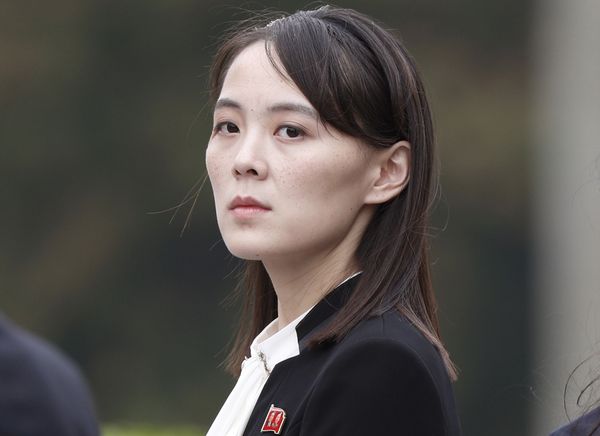
Ballet choreographers have long drawn inspiration from “Don Quixote,” Miguel Cervantes’ beloved 17th-century novel about a low-level Spanish nobleman who imagines himself a knight-errant and embarks on a series of fanciful adventures.
The most famous of these adaptations was created by the celebrated French ballet master Marius Petipa to a score by Ludwig Minkus and unveiled at Moscow’s Bolshoi Ballet in 1869. It was later remounted and expanded, including an influential 1900 revival by Alexander Gorsky.
In the first of 10 performances Thursday evening at the Lyric Opera House, the Joffrey Ballet presented a return of Russian-born choreographer Yuri Possokhov’s take on “Don Quixote,” which the company premiered in 2011.
With an expansive cast of 52 dancers, this production, postponed from earlier this year because of a COVID-19 surge, delivers abundant spectacle and high-voltage dancing while simultaneously conveying the core of Don Quixote’s heartwarming and timeless story.
Unlike Possokhov’s 2019 adaptation of “Anna Karenina,” which brought together a mix of conventional and startlingly innovative choreography, this production is very much rooted in Petipa’s original and hews to tradition.
Although there are a few elements that feel a little uncomfortable in 2022, like the tired comedic trope of the bumbling, dandyish, rich older man trying to win the hand of much younger woman with his money, there is a reason why this story is a classic: It still resonates with audiences.
But that is not to say that there are not some contemporary touches. Conventional set pieces, such as constructed storefronts and pieces of furniture, are nicely integrated with tech-savvy projections designed by Wendall Harrington.
A wonderful scenic moment comes early on when Don Quixote is lying in bed and dreaming of valorous exploits as projected images of knights and horses taken from period artworks circle on the backdrop above him.

Projections are also effectively used to suggest the windmills at the beginning of Act 2 that Don Quixote imagines as monsters and dragons during a thunderstorm. As he is charging one of the windmills, he appears to be thrown into the air by its blades as a suspended harness zips him upward in dandy piece of stagecraft.
Also deserving of mention is Don Quixote’s horse, Rocinante, which was designed by VonOrthal Puppets of Evanston to striking and clever effect. It is a kind of constructed costume with a flexible, hinged head and neck and cloth strips lining the back that fits over the top of two dancer-puppeteers.
The rough essentials of Cervantes’ story are contained in this balletic adaptation, with the title role ably portrayed by Miguel Angel Blanco, and Derrick Agnoletti (one of five dancers retiring from the company after this season) milking the comic potential of Don Quixote’s hapless, potbellied sidekick, Sancho Panza.
The novel’s central message of imagining big and following one’s dreams comes through, but there is nothing profound about this ballet and it’s not meant to be. In the end, the story is really just a framework for an abundant series of colorful, high-energy pas de deux and ensemble dances.
Highlights of the latter include a high-stepping, folk-tinged tambourine and fan dance at the end of Act 1 and the beautiful Act 2 dream realm of the Dryads who are led by the Dryad Queen, smartly performed by Gayeon Jung.
Nearly stealing the show are Stefan Goncalvez as Espada, a famous toreador, and Brooke Linford as Mercedes, a street dancer, who offer some of the production’s most athletic and sensual dancing. Especially memorable is their flamenco-suffused pas de deux in Act 2, with Linford swirling her long, flowing dress in a heart-pounding, fiery solo.

Taking centerstage are Victoria Jaiani, the innkeeper’s daughter, Kitri, and Dylan Gutierrez as Basilio, the barber. In a crowning act of valor, Don Quixote shields their love from Gamache, the monied dandy, and persuades Kitri’s father to give the couple his blessing.
A few of Gutierrez’s gestures and steps can be a bit stiff, but he delivers some thrilling leaps and serves as impeccable partner with the two dancers teaming for one seamless, seemingly effortless lift after another.
Jaiani was arguably the evening’s star, conveying Kitri’s youthful exuberance, handling every step with self-confident polish and precision and topping her grand pas de deux in Act 2 with a dazzling set of superbly executed fouetté turns.
Also deserving note are Miu Tanaka as the perky, high-stepping Amore and Amanda Assucena and Valeria Chaykina, who portray Kitri’s friends and make repeated appearances, often interspersed with the central couple.







